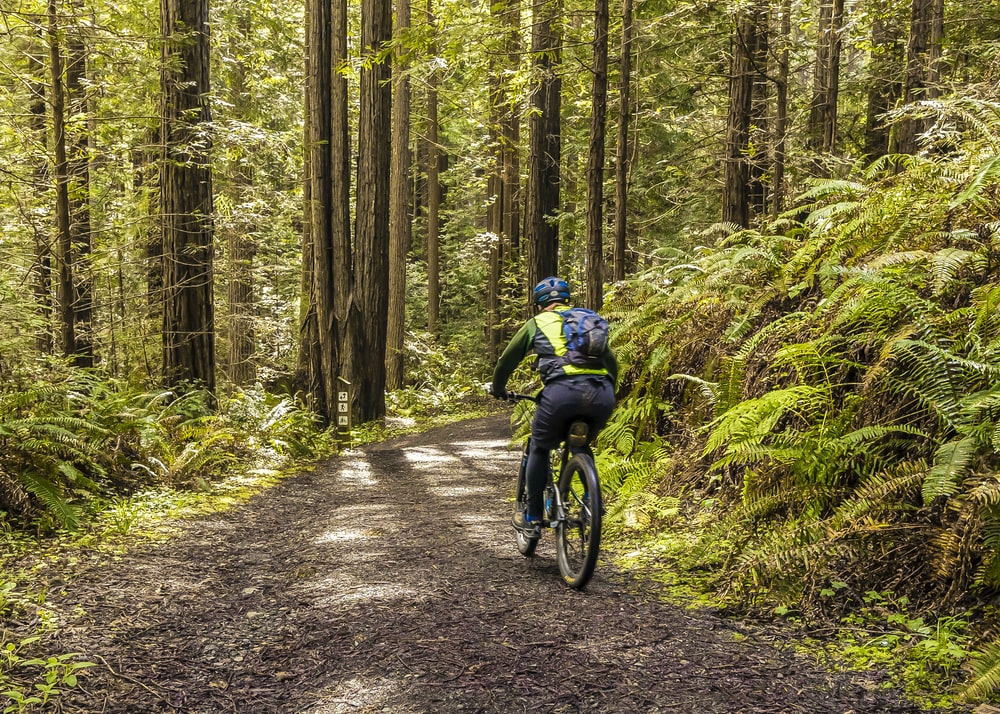Mountain biking on trails can be a fun and challenging activity. However, there are some important rules to follow to make sure you ride safely and responsibly when on trails shared with others.
Right of Way
When on shared-use trails, knowing the right of way helps avoid collisions. Generally, bikes should yield to all other trail users. So bicyclists should be prepared to stop or slow down for walkers, runners, horseback riders, etc.
The one exception is that downhill cyclists should have the right of way on certain trails and yield to no one. This is because it can be difficult for them to stop quickly. So on hills and mountains, make sure you are aware if there are any downhill-only bike trails before stepping onto them.
Announcing Yourself
When passing other trail users, bicyclists should politely announce themselves well in advance. For example, call out “Passing on your left!” before overtaking walkers or horseback riders.
Give them enough time to hear you coming, react if needed, and let you ride by safely. Passing others quietly can startle them and even cause collisions.
Speed and Control
It’s essential to bike under control at reasonable speeds that suit the conditions. What may be a safe pace and level of control when riding by yourself may be too dangerous around groups of hikers and their pets.
Slow way down when approaching animals like horses, which can startle and react unpredictably if you zoom by too quickly. Save higher speeds for straightaways without many users sharing the path. Control matters more than speed when enjoying the trails responsibly.
Being Predictable
Follow the expected flow of the trail as much as possible. For example, staying as far to the right as is safe and reasonable. Riding on the left side coming around blind corners or curves can lead to head-on collisions.
Make your intentions clear through hand signals when turning off the main trail. Also announce yourself when passing others. Predictability prevents accidents.
Staying on the Trail
It may be tempting to veer off or cut switchbacks on adjacent slopes or forest areas. But resist that urge and stay on the designated trails. Riding on or over vegetation can severely erode hillsides and damage ecosystems. Over time, even small trails created by bicycles venturing off established paths can expand into ugly scars. Stick to paths created explicitly for mountain biking and be kind to the natural surroundings.
Obeying Signage
Pay attention to any trail signage, especially related to directionality and bike access. For example, many trails will indicate if a route is a bike-only downhill section. Other paths may prohibit access to bicycles altogether. Respect signs banning bikes, as those trails have good reasons for excluding cyclists, often related to safety or environmental concerns.
Yielding Appropriately
Most shared trails have built-in areas for yielding, often marked by icons or logos. If you hear other trail users approaching from behind asking to pass, look ahead for the next safe opportunity to pull over, slow down, and wave them by politely. Unless descending steep terrain, bicyclists generally should yield to all others if possible. Sometimes the person passing may need to slow down and request you verbally yield when approaching one of these checkpoints. Pay close attention when cresting hills in case someone is exiting from an intersection on the other side as you ride over the top unable to see far ahead. Covering your brake levers prepares you for sudden stops. Approach blind spots cautiously and deliberately until threats can be identified.
Not Scaring Animals
Startling horses and other pets risks spooking them to bolt out of the riders’ control. So take it slowly when overtaking animals like horses from behind. Talk in a normal indoor voice to announce your presence. Resist shouting loudly, as this can spook the creatures. Give very wide clearance when riding past. Slow down or track stand to wait if the equestrians request space. Follow these etiquette rules, and the horse riders will appreciate your consideration.
Descending Carefully
Use particular care when flying downhill around corners or over rises blocking the view ahead. Approach cautiously until determining no one is climbing up hidden on the other side. Excess speed removes reaction time. Cover brakes in case sudden stops become necessary. Scan alternately near and far down the trail to prepare for unexpected hazards. Refrain from assuming a clear line of sight means no danger exists. Deer, livestock, or errant children may dart onto the path unexpectedly.
Showing Respect
Above all, maintaining an attitude of respect makes trail riding pleasant for everyone. Simple courtesies like greeting others calmly when passing by and coming to a halt to allow safe space goes a long way. Stop to offer help if another user ever gets hurt or runs into mechanical trouble. Following thoughtful rules facilitates fun cooperation through beautiful natural areas with minimal friction between various people sharing finite crowded space together.






